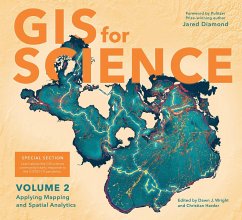GIS for Science, Volume 2: Applying Mapping and Spatial Analytics brings to life a continuing collection of real-world examples of scientists using geographic information systems (GIS) and spatial data science to expand our understanding of the world. They are part of a global effort to find ways to sustain a livable environment for all life on the planet. At Esri, we called this The Science of Where®, a concept that merges our impulse to dream, discover, and understand with the rigor and discipline of the scientific method and the foundation of geography. As such, GIS provides a framework for applying science to almost every human endeavor as we aspire to transform the world through mapping analytics. The stories in this book are written for professional scientists, the swelling ranks of citizen scientists, and anyone interested in science and geography. The contributors represent a cross section of scientists who employ data gathered from satellites, aircraft, ships, drones, and myriad other remote-sensing and on-site technologies. This data is brought to life with GIS and the broader realm of spatial data science to study a range of issues relevant to our understanding of planet Earth and beyond. Scientists are documenting an array of geographically oriented issues ranging from climate change, natural disasters, and the loss of biodiversity to political strife, disease outbreaks, and resource shortages. The examples in GIS for Science, Volume 2: Applying Mapping and Spatial Analytics show how ArcGIS® software and the ArcGIS® Online cloud-based system work as a comprehensive geospatial platform to support research, collaboration, spatial analysis, and science communication across many settings and communities. In these chapters, you'll learn about sustainable precision agriculture, predicting geological processes below the surface of the earth, leveraging GIS near-realtime disaster response, recovery, resilience and reporting, the latest innovations in monitoring air quality and much more. These stories, along with the supplementary resources online, present GIS ideas and inspiration that users can apply across many disciplines, making this volume relevant to diverse scientific audiences.

